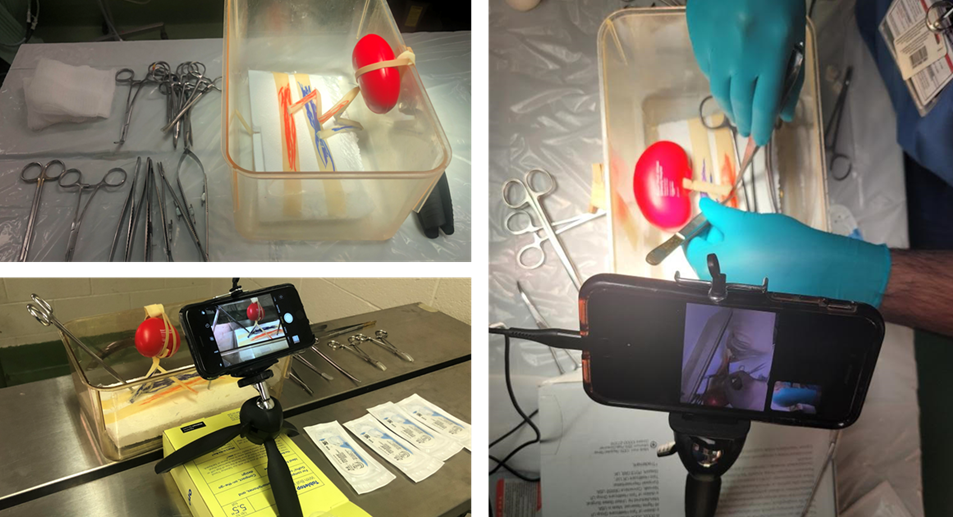Feasibility of a Virtual Renal Transplant Simulation Model for Surgical Trainees in the Covid Era
1General Surgery, Rutgers Robert Wood Johnson Medical School, New Brunswick, NJ, 2Transplant, Rutgers Robert Wood Johnson Medical School, New Brunswick, NJ, 3Transplant Institute, Loma Linda University Medical Center, Loma Linda, CA
Meeting: 2021 American Transplant Congress
Abstract number: LB 47
Keywords: COVID-19, Kidney transplantation
Topic: Clinical Science » Infectious Disease » COVID-19
Session Information
Session Name: COVID-19
Session Type: Poster Abstract
Session Date & Time: None. Available on demand.
Location: Virtual
*Purpose: The COVID-19 pandemic and social distancing requirements has affected our resident education curriculum. We developed a virtual renal transplant simulation session to simulate renal vascular anastomoses (RVA). We hypothesize that this tool can be used to continue surgical skills education and enhance resident comfort with RVA in the COVID era.
*Methods: We employed a well described model to mimic RVA to the iliac vessels using a mock kidney and penrose drains in a 5x8x11inch transparent container to simulate operating in the iliac fossa. Additionally, each kit included camera stands for mobile phones. General surgery residents with varying levels of experience participated. Our virtual workshop started with a demonstration and took place via a live video interface from several remote locations. An attending surgeon observed each resident and provided real time feedback. Pre and post simulation surveys were sent out to elicit comfort levels with procedure on a scale from 0 (not comfortable) to 100(very comfortable) and fidelity as a tool to improve general surgery residency training in renal transplantation.
*Results: 16 surgical residents participated in the simulation. 12 (75%) had previously rotated on transplant surgery service. 75% of residents reported performing <10 vascular anastomoses. There was a statistically significant increase in mean comfort level score with performing a vascular anastomosis after the simulation compared to before (52 vs 23, P <0.01). There was also a statistically significant increase in mean comfort level score for assisting with a vascular anastomosis after compared to before (70 vs 38, p<0.01). 100% of residents reported that the model was useful for practicing needle control and precision, practicing knot tying, and learning the steps for completing renal vascular anastomoses. All residents recommended that this training model be used prior to rotating on the transplant service.
*Conclusions: We demonstrated the feasibility of virtual sessions that surgical residents found to be effective in improving their technical skills. This method can be modified for other elements of surgical simulation while maintaining social distancing measures.
To cite this abstract in AMA style:
Eletta O, Iacono S, Walls D, Puri S, Perry B, Anderson C, Nguyen MJ, Bongu A. Feasibility of a Virtual Renal Transplant Simulation Model for Surgical Trainees in the Covid Era [abstract]. Am J Transplant. 2021; 21 (suppl 3). https://atcmeetingabstracts.com/abstract/feasibility-of-a-virtual-renal-transplant-simulation-model-for-surgical-trainees-in-the-covid-era/. Accessed December 13, 2025.« Back to 2021 American Transplant Congress

